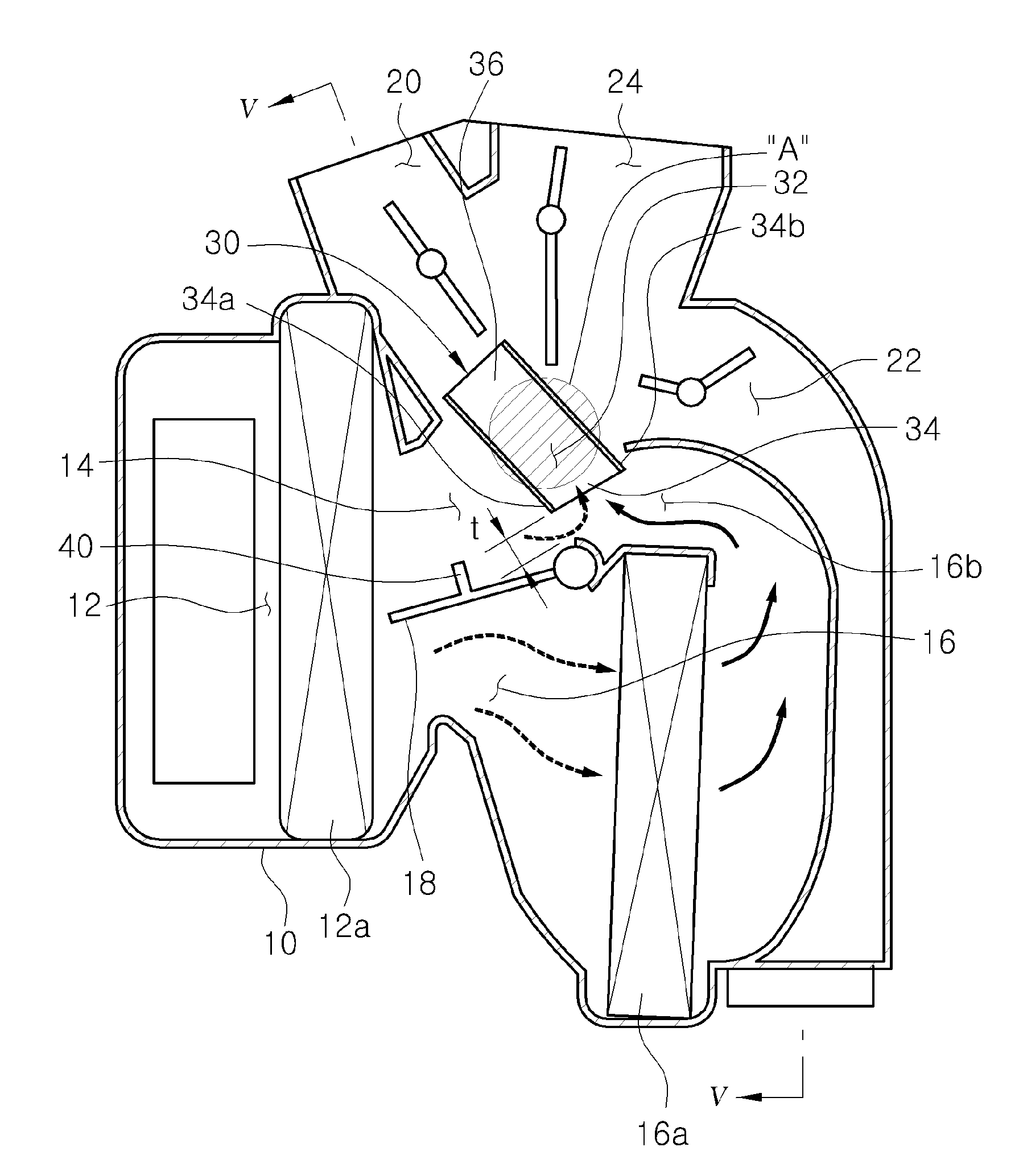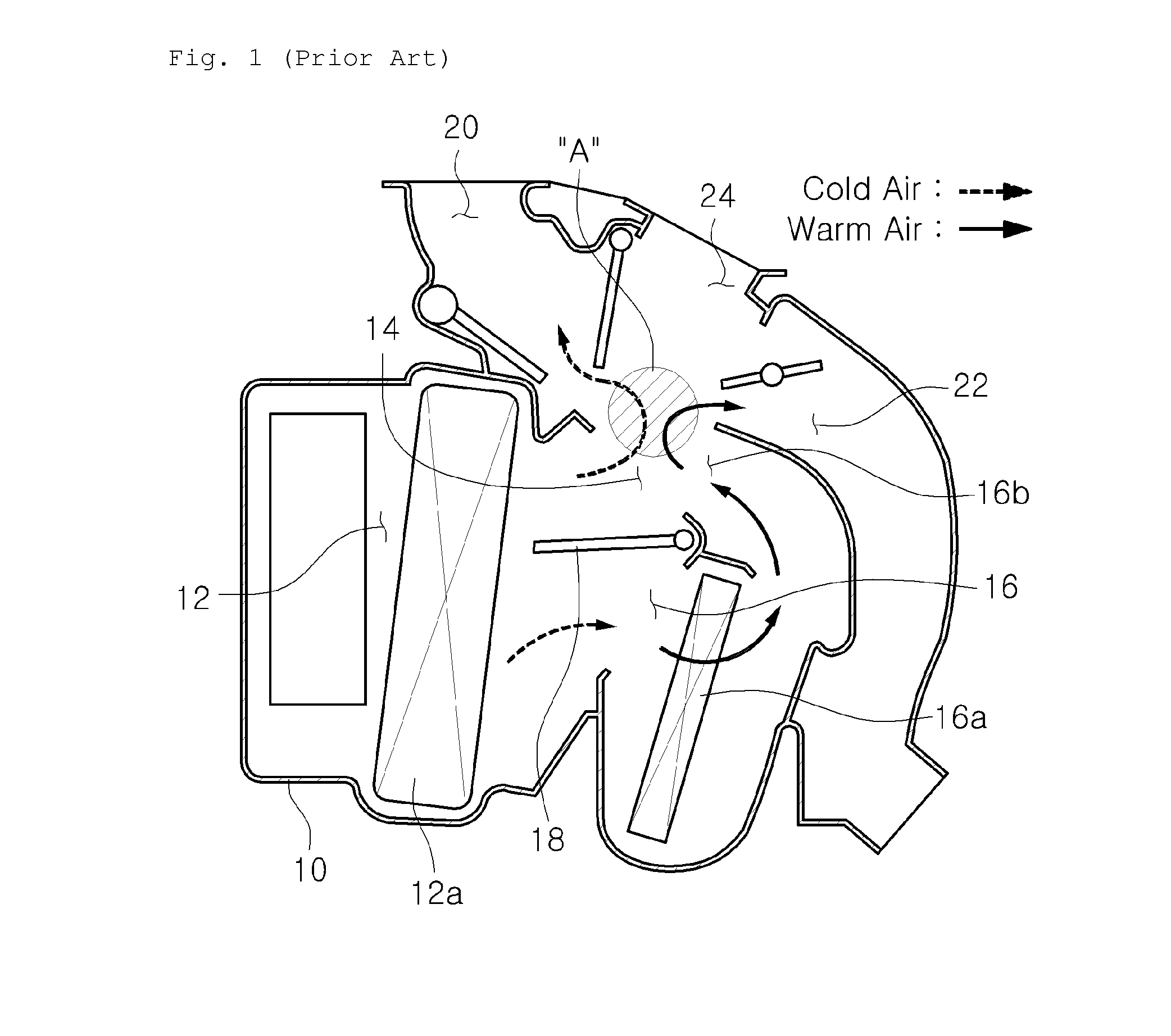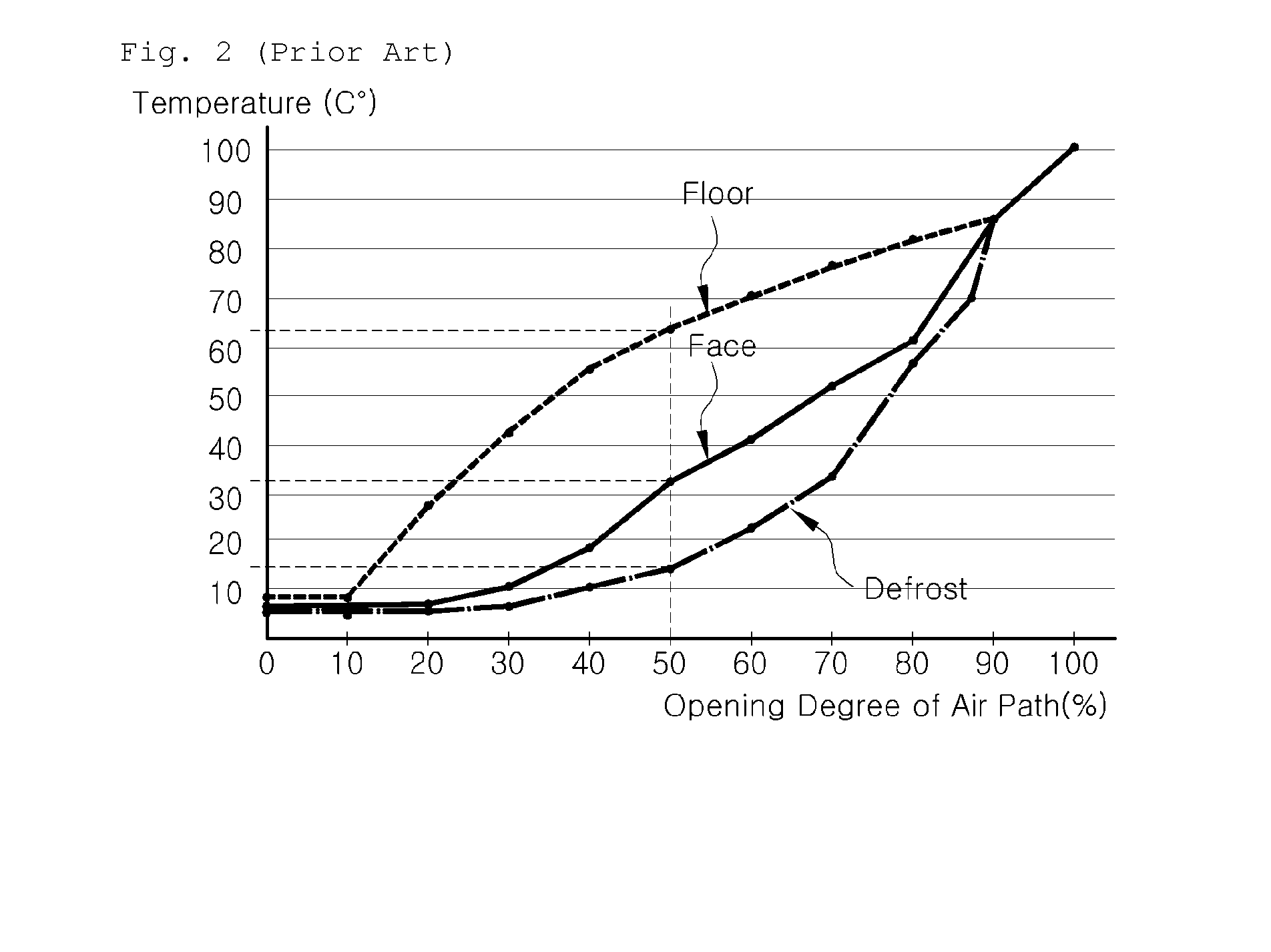Air conditioning system for motor vehicles
a technology for air conditioning systems and motor vehicles, which is applied in the direction of vehicle maintenance, vehicle cleaning, transportation and packaging, etc., can solve the problems of cold air being supplied, cold air being fed, and cold air being mixed
- Summary
- Abstract
- Description
- Claims
- Application Information
AI Technical Summary
Benefits of technology
Problems solved by technology
Method used
Image
Examples
first embodiment
[0035]Prior to describing the features of an air conditioning system for motor vehicles according to the present invention, the general configuration of the air conditioning system will be briefly described with reference to FIG. 4.
[0036]The present air conditioning system includes an air conditioner case 10 within which a main flow path 12 is formed. An evaporator 12a is installed within the main flow path 12. The evaporator 12a serves to cool the air flowing along the main flow path 12.
[0037]The main flow path 12 is bifurcated into a cold air path 14 and a warm air path 16. A heater core 16a is installed within the warm air path 16. A temperature control door 18 is arranged at a bifurcating point of the cold air path 14 and the warm air path 16. The cold air cooled by the evaporator 12a passes through the cold air path 14. The warm air heated by the heater core 16a passes through the warm air path 16.
[0038]The temperature control door 18 is swung between the cold air path 14 and t...
second embodiment
[0061]FIG. 9 shows an air conditioning system according to a second embodiment of the present invention. The air conditioning system of the second embodiment includes a cold air introducing cutout portion 50 formed in the outlet 36 of the bypass duct 30. The cold air introducing cutout portion 50 is formed by partially cutting away the outlet 36 of the bypass duct 30 and is arranged in an opposing relationship with the cold air path 14. In the present embodiment, the cold air introducing cutout portion 50 serves as a cold air introducing means.
[0062]A part of the cold air flowing through the cold air path 14 is introduced into the bypass duct 30 through the cold air introducing cutout portion 50. The cold air thus introduced is mixed with the bypassed warm air flowing through the bypass duct 30, thereby reducing the temperature of the bypassed warm air flowing through the bypass duct 30. As a result, it is possible to effectively reduce the temperature of the warm air flowing toward...
third embodiment
[0070]FIG. 12 shows an air conditioning system according to a third embodiment of the present invention. The air conditioning system of the third embodiment includes a branch duct 70 branched from the bypass duct 30. The branch duct 70 is branched from the bypass duct 30 to face toward a face vent 24.
[0071]The branch duct 70 serves to bypass the air flowing through the bypass duct 30 toward the face vent 24. Thus, a mixture of the warm air and the cold air is also supplied to an intermediate region of the vehicle room existing between the upper region and the lower region.
[0072]As a result, the intermediate region of the vehicle room is kept at a temperature similar to the temperature of the upper and lower regions of the vehicle room. This makes it possible to minimize the temperature deviation generated between the upper and lower regions and the intermediate region of the vehicle room, consequently enhancing the pleasantness within the vehicle room.
PUM
 Login to View More
Login to View More Abstract
Description
Claims
Application Information
 Login to View More
Login to View More - R&D
- Intellectual Property
- Life Sciences
- Materials
- Tech Scout
- Unparalleled Data Quality
- Higher Quality Content
- 60% Fewer Hallucinations
Browse by: Latest US Patents, China's latest patents, Technical Efficacy Thesaurus, Application Domain, Technology Topic, Popular Technical Reports.
© 2025 PatSnap. All rights reserved.Legal|Privacy policy|Modern Slavery Act Transparency Statement|Sitemap|About US| Contact US: help@patsnap.com



